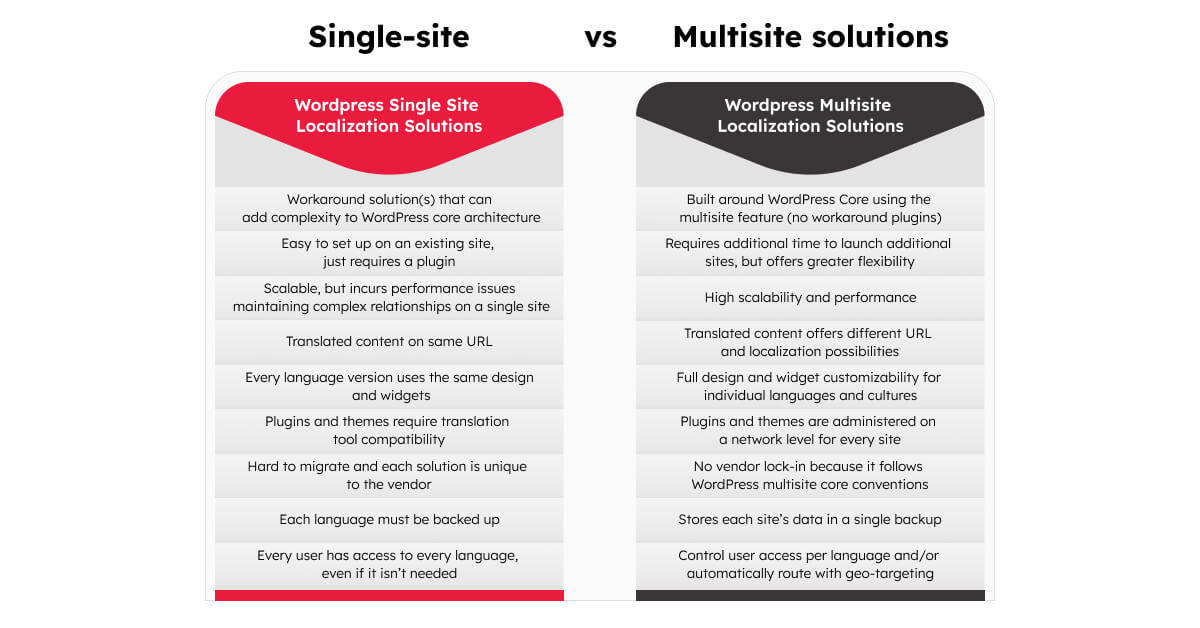How do I make my enterprise WordPress site multilingual?
WordPress VIP makes localization for enterprise sites easier than most CMSes. Though the process of localization can be complicated, it comes with numerous benefits to both you and your audience. So, if you want to know how to make your site localized (and therefore multilingual), you’ve come to the right place.
Benefits of a multilingual, localized site
Offering personalized site content, tailored to specific languages and cultures, is well worth the investment. With a multilingual site, you’ll likely experience the following benefits:
- Improved customer experience and user experience (CX/UX), resulting in more conversions
- Expansion to new audiences and markets
- Better SEO performance and ranking
- More accurate audience targeting
What is localization?
Localization is an important part of personalization. Localization is the process of tailoring content by locale or region. It often involves translating content and internationalizing the CX/UX.
Localization options for enterprise WordPress
While you can manually translate and publish multiple languages on a single-site instance (or use a custom API), hosting each language on its own site within a multisite instance is recommended.
Single-site vs. Multisite solutions

Both single- site and multisite solutions have benefits. But for enterprises, a multisite solution is the clear winner based on the flexibility and scalability it provides.
Must-have multilingual site features
There are three main features necessary for a multilingual site to be successful.
- Geolocation detection
This is done automatically through various WordPress plugins. Geolocation detection pinpoints where the user is geographically and enables personalization for languages and content based on that location.
- Subdomains and/or subdirectories
Using a subdomain or a subdirectory helps map domains for a multisite setup. Enabling subdomains/subdirectories for a multilingual site offers additional flexibility for themes, content, etc., and provides a more personalized and localized CX/UX.
- Automated or machine translations
Automatic translations, done via machine learning or artificial intelligence (ML/AI), are sometimes less accurate but save time and enhance editorial workflows—especially for small content teams. There are numerous plugins and APIs available with WordPress VIP.
How to localize your enterprise site on WPVIP
Each localization process looks different based on the size and scope of the project, but there are a few common threads.
Single site instance localization
- Install translation or multilingual plugin(s), or manually translate and add content.
- Assign custom post types and taxonomies per language or region.
- Assign custom permissions for user access to specific languages or regions.
Multisite instance localization
- Begin a multisite launch.
- Install multisite or migrate to a multisite instance.
- Launch a new network site in the existing multisite for each language.
- Install and activate multilingual plugin of choice.
- Review restriction methods for unlaunched content/translated sites under development.
- Map new language domains.
- Assign user permissions based on network sites.








